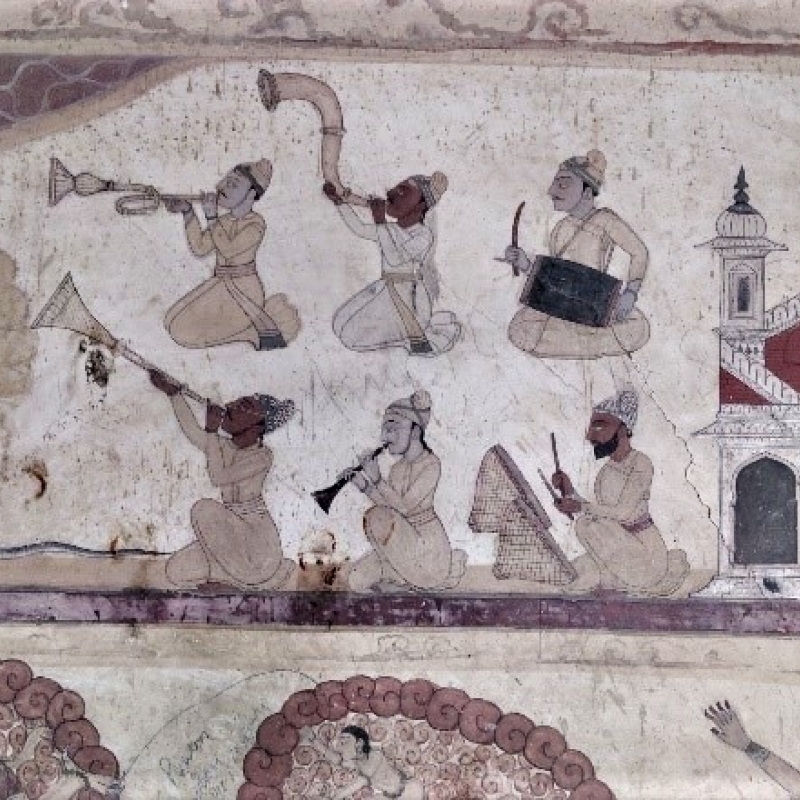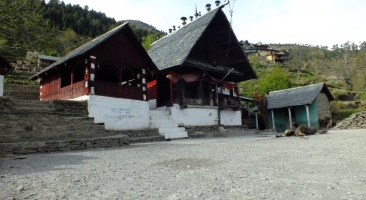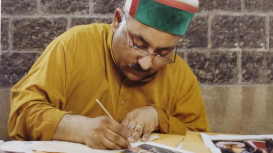The town of Chamba, located in the North-Western Himalayan region, was established in the eleventh century by Raja Sahilla of Varmana dynasty. The town holds a rich heritage of temple construction which dates back to the twelfth century. The temples of Chamba have attracted the attention of scholars since the times of J. Ph. Vogel and Hermann Goetz who provided an extensive body of literature on the temples of Chamba. The temple of Devi Kothi was built during the reign of Raja Umed Singh of Chamba (r. 1748–64) on the northern frontier of the kingdom. The temple is renowned for its murals and woodcarving which are influenced by the tradition of Chamba miniature painting. While the murals depict Devi and Krishna slaying several demons, the woodcarvings rendered on the ceiling portray several mythological and celestial beings whose physiognomies bear resemblances to the style of painting which was popular in the court of Chamba during that period. Several stylistic and iconographic impressions of miniature painting tradition can be observed on the murals and woodcarving in Devi Kothi temple. This module highlights the style, subject matter and iconography of the murals in Devi Kothi temple and traces the influence of imperial Mughal art on the painting tradition of Chamba.
Murals of the Devi Kothi Temple in Chamba
in Module
Published on:

Sarang Sharma
Sarang Sharma completed his masters in Art History from the Maharaja Sayajirao University of Baroda in 2017. He specialises in Islamic and Indian art with an emphasis on Mughal and Pahari painting traditions. At present, he is working as a Junior Research Assistant at Pundole's, Mumbai.



